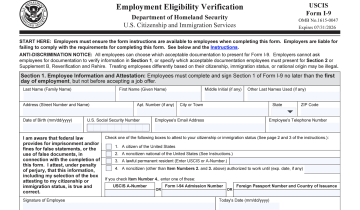We have often heard about candidates ghosting recruiters, but this trend seems to be taking a new turn now, with recruiters not responding to candidates! After months of preparation and sky-high hopes, this is definitely NOT what the candidates deserve. So today, we’re discussing how recruiting professionals can break free of this rut and not let applicants down! Read on.
Understanding the impact of recruiter ghosting:
Recruiter ghosting usually occurs when a candidate, having invested time and effort into applying or interviewing for a position, is left without any feedback or communication from the recruiter. This silence can last for weeks or even months, leaving candidates in limbo and questioning their worth.
The repercussions of this practice extend beyond individual disappointment; they contribute to a broader narrative of mistrust and dissatisfaction with the recruitment process.
Being ghosted by a recruiter is probably the last thing any job seeker expects from a trusted employer.
"An enjoyable candidate experience can help you retain qualified applicants in your hiring pipeline for future reference."
Why do recruiters ghost? The principal challenges leading to recruiter ghosting:
Recruiters deal with complex schedules every day, posing various challenges that can impact their ability to maintain consistent communication with candidates. Identifying these roadblocks is key to addressing the issue of ghosting and improving the overall candidate experience.
1. A high volume of positions:
Hiring professionals often manage multiple job openings simultaneously. Each position may attract dozens, if not hundreds, of applicants, making it difficult to provide personalized attention to every candidate.
This high volume can lead to delays in communication or, in some cases, unintentional recruiter ghosting.
2. Time-consuming coordination:
Scheduling interviews and coordinating with hiring managers can be a time-consuming process.
Recruiters must juggle various schedules and preferences, which can sometimes result in candidates being left in confusion while details are finalized.
3. Administrative overload:
We tend to handle a multitude of administrative tasks, from writing interview notes and sending emails to updating candidate records in the applicant tracking system (ATS).
This administrative burden can detract from the time available for direct candidate communication.
4. Balancing multiple stakeholders:
Recruiters act as intermediaries between candidates and hiring managers. Balancing the expectations and needs of both parties can be a hard fetch, especially when there are conflicting priorities or delays in feedback from hiring managers.
5. Personal life & workload balance:
Recruiters, like all professionals, have personal lives that can sometimes impact their workload management.
Unexpected life events or particularly busy periods at work can lead to delays in candidate communication.
6. The juggling act:
As one recruiter aptly described, being a recruiter is like being a master juggler, with multiple balls in the air at all times. The challenge lies in ensuring that none of these balls – representing tasks, candidates, and positions – are dropped. However, the reality is that sometimes, despite best efforts, something has to be given up, and communication with candidates may suffer as a result.
By acknowledging these challenges, recruiters can take proactive steps to mitigate their impact, such as implementing efficient time management strategies, utilizing technology to streamline administrative tasks, and setting clear priorities to ensure timely communication with candidates.
Let’s be more precise with how you can overcome these bottlenecks because, hey, It’s NOT okay to ghost candidates!
7 spot-on strategies to ditch recruiter ghosting:
Improving the candidate experience requires a multifaceted approach that addresses the various touchpoints in the recruitment process.
Here are some detailed strategies recruiters can employ:
1. Set reminders for follow-ups:
Utilize digital tools like calendar apps to set reminders for following up with candidates who have interviewed or even with hiring managers. This ensures that you maintain communication, even if there’s no new update.
Regular check-ins convey respect for the candidate’s time and keep them informed about their status.
2. Prioritize feedback:
Make feedback a top priority in your workflow. After each interaction with a candidate, take a moment to update their status or provide feedback.
This habit ensures that candidates are not left wondering about their progress and feel valued throughout the process.
3. Use email templates:
Develop a set of personalized email templates for various stages of the recruitment process, such as post-screening, post-interview, and rejection.
While ATS systems may offer automated messages, adding a personal touch can significantly enhance the candidate experience.
Customize these templates to reflect your company’s brand and values, and update them regularly to ensure they remain relevant and engaging.
4. Engage hiring managers:
Foster a collaborative relationship with hiring managers to ensure timely feedback.
Explain the importance of quick feedback in providing a positive candidate experience and maintaining the image of your employer brand.
Encourage them to prioritize candidate evaluations and share their thoughts promptly after interviews.
5. Communicate decisions swiftly:
Once a decision has been made, communicate it to the candidate as soon as possible.
If a candidate is not moving forward, a phone call is often the most respectful way to convey the news. If that’s not feasible, an email or text message can suffice.
Prompt communication helps candidates move on and continue their job search without unnecessary delay.
6. Practice empathy & clarity:
Approach each interaction with empathy and transparency.
Understand that job seekers may be dealing with stress and uncertainty, and your communication can have a significant impact on their experience.
Be clear about the next steps, timelines, and any feedback you can provide. Even if the news is not positive, a respectful and empathetic approach can leave a lasting positive impression.
7. Continuous improvement:
Regularly solicit feedback from candidates about their experience with your recruitment process. Use this to identify areas for improvement and make adjustments accordingly.
Continuous refinement shows your commitment to providing a positive candidate experience and can help reduce ghosting over time.
By implementing these strategies, recruiters can create a more positive and respectful hiring experience for applicants, reducing the likelihood of ghosting and building a stronger reputation.
There’s nothing as valuable as candidate experience in a recruitment process. Even post-rejection, an enjoyable candidate experience can help you retain qualified applicants in your hiring pipeline for future reference.
I hope my ideas will help you build an employer brand that screams transparency. Happy recruiting!






